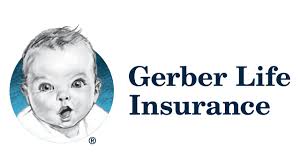Introduction to General Car Insurance
Car insurance is an essential part of owning and driving a vehicle. It provides financial protection in case of accidents, theft, and damage to your car or others involved in a collision. Whether you’re a new driver or someone looking to switch policies, understanding the basics of general car insurance is crucial.
In this guide, we’ll cover everything you need to know about general car insurance, from the types of coverage available to tips on lowering your premiums and selecting the best insurance provider.
Why Car Insurance Is Essential
Car insurance isn’t just an optional expense—it’s a necessity for every driver. Here’s why:
Legal Requirements
- In most countries and states, car insurance is legally required to operate a vehicle on public roads.
- Liability coverage is the minimum requirement in many places, ensuring that if you cause an accident, you can cover damages to others.
- Driving without insurance can lead to hefty fines, license suspension, or even jail time in severe cases.
Financial Protection
- Accidents can lead to costly repairs, medical bills, and legal fees.
- Without insurance, you’d have to pay for these expenses out of pocket.
- A good car insurance policy helps cover these costs, reducing your financial burden.
Types of General Car Insurance Coverage
Car insurance comes in different forms, each serving a unique purpose. Here are the most common types:
Liability Coverage
- Covers damages and injuries you cause to others in an accident.
- Usually split into bodily injury liability and property damage liability.
Collision Coverage
- Pays for damage to your car if you’re in an accident, regardless of fault.
- Ideal for newer vehicles where repair costs can be high.
Comprehensive Coverage
- Covers non-collision incidents like theft, vandalism, fire, or natural disasters.
- Great for those living in areas prone to extreme weather or high crime rates.
Personal Injury Protection (PIP)
- Covers medical expenses for you and your passengers, regardless of fault.
- Some policies also cover lost wages and rehabilitation costs.
Uninsured/Underinsured Motorist Coverage
- Protects you if you’re hit by a driver with little or no insurance.
- Ensures you won’t have to pay out-of-pocket for medical bills or car repairs.
How General Car Insurance Works
Understanding how insurance policies work can help you make informed decisions.
Premiums and Deductibles
- Premium: The amount you pay regularly for coverage (monthly, semi-annually, or annually).
- Deductible: The amount you pay out of pocket before your insurance kicks in.
- Higher deductibles typically mean lower premiums, but more out-of-pocket costs when making a claim.
How Claims Are Processed
- Report the incident – Notify your insurer immediately after an accident.
- Assessment – An adjuster evaluates damages and determines fault.
- Payout or Repairs – The insurer covers the repair costs or provides compensation based on the policy terms.

Factors Affecting Car Insurance Rates
Car insurance rates vary based on several factors, including:
Driver’s Age and Experience
- Younger and inexperienced drivers typically pay higher premiums.
- More experienced drivers with clean records often receive discounts.
Vehicle Type and Model
- Luxury and sports cars generally have higher insurance rates due to expensive repair costs.
- Safety features and anti-theft devices can lower premiums.
Location and Driving History
- Urban areas often have higher insurance costs due to increased accident risks.
- A clean driving record leads to lower premiums, while multiple violations can raise rates significantly.
Credit Score Impact
- Many insurers use credit scores to determine risk levels.
- A higher credit score can mean lower insurance rates, as it indicates financial responsibility.
How to Choose the Best General Car Insurance
Finding the right policy requires research and comparison.
Comparing Quotes from Different Providers
- Get quotes from multiple insurance companies to find the best rates.
- Use online comparison tools or work with an independent insurance agent.
Understanding Policy Terms and Conditions
- Read the fine print to know what’s covered and what’s not.
- Look for exclusions, limits, and additional fees that may apply.
Customer Reviews and Ratings
- Check online reviews to gauge customer satisfaction.
- Look for insurers with strong claims processing and customer service ratings.
Ways to Lower Your Car Insurance Premiums
Car insurance can be expensive, but there are ways to reduce your premiums without compromising coverage.
Safe Driving Discounts
- Many insurance companies offer discounts for maintaining a clean driving record.
- Some insurers provide accident forgiveness programs for long-term customers with no claims.
- Enrolling in defensive driving courses can also lead to discounts.
Bundling Insurance Policies
- Purchasing multiple insurance policies from the same provider (e.g., home and auto) can result in discounts.
- Family policies or multi-car discounts are available for those insuring multiple vehicles.
Increasing Deductibles
- Choosing a higher deductible lowers your monthly premium.
- Be sure you can afford the deductible amount if you need to file a claim.
Installing Safety Features
- Vehicles with anti-theft systems, airbags, and anti-lock brakes often qualify for lower premiums.
- Some insurers offer discounts for using telematics or usage-based insurance programs.
Common Car Insurance Myths Debunked
Many people misunderstand car insurance policies. Let’s clear up some common myths.
Myth #1: Red Cars Cost More to Insure
- Insurance companies do not base rates on car color.
- Factors like car model, age, and safety features determine costs.
Myth #2: Personal Auto Insurance Covers Business Use
- If you use your car for work (e.g., delivery, ridesharing), you may need commercial insurance.
- Failing to disclose business use can result in denied claims.
Myth #3: Minimum Coverage is Always Enough
- While minimum liability coverage meets legal requirements, it may not fully protect you.
- Comprehensive and collision coverage are recommended for better financial security.
What to Do After a Car Accident
Accidents can be stressful, but knowing what steps to take can make the process smoother.
Immediate Steps to Take
- Check for injuries – Ensure everyone is safe and call emergency services if needed.
- Move to safety – If possible, move vehicles to the side of the road to prevent further accidents.
- Exchange information – Collect names, contact details, insurance information, and vehicle details.
- Document the scene – Take photos of the accident, damages, and road conditions.
- File a police report – Having an official report can help with insurance claims.
How to File a Claim
- Contact your insurance provider as soon as possible.
- Provide all necessary documents, including the police report and photos.
- Work with your insurer to assess damages and finalize the claim.
The Role of Car Insurance in Financial Planning
Car insurance isn’t just about protecting your vehicle—it’s a crucial part of your overall financial strategy.
Avoiding Financial Hardship
- Without insurance, accident-related expenses can drain your savings.
- Liability coverage protects you from lawsuits that could ruin your finances.
Long-Term Savings
- Paying a small premium now can prevent huge costs in the future.
- Choosing the right coverage ensures you’re not overpaying while staying protected.
Car Insurance for High-Risk Drivers
High-risk drivers often face higher insurance rates, but there are ways to find affordable options.
Who is Considered a High-Risk Driver?
- Drivers with multiple traffic violations or accidents.
- Young or inexperienced drivers.
- Those with a history of DUI/DWI offenses.
How to Get Affordable Coverage
- Take defensive driving courses to improve your driving record.
- Look for insurance companies that specialize in high-risk drivers.
- Consider usage-based insurance to lower costs by proving safe driving habits.
Temporary vs. Long-Term Car Insurance Policies
Not all drivers need year-round coverage. Temporary policies may be a better fit for some situations.
Temporary Car Insurance
- Short-term policies that last from a few days to a few months.
- Ideal for rental cars, borrowing a friend’s car, or short-term vehicle ownership.
Long-Term Car Insurance
- Traditional policies that provide consistent coverage throughout the year.
- More cost-effective for full-time vehicle owners.
The Impact of Technology on Car Insurance
Technology is changing how car insurance works, making policies more personalized and efficient.
Telematics and Usage-Based Insurance
- Insurers use devices or apps to track driving habits.
- Safe drivers can earn lower premiums based on real-time data.
AI and Claims Processing
- Artificial intelligence speeds up claim approvals and fraud detection.
- Chatbots and digital claims filing make the process more convenient for policyholders.
Best General Car Insurance Companies in 2025
Choosing the right insurer can make a big difference in coverage, customer service, and pricing.
Top-Rated Car Insurance Companies
- State Farm – Best for customer service and affordability.
- GEICO – Known for competitive rates and online convenience.
- Progressive – Offers customizable policies and discounts.
- Allstate – Great for bundling home and auto insurance.
- USAA – Best for military personnel and their families.
Conclusion and Final Tips
General car insurance is a must-have for every driver, offering financial protection, legal compliance, and peace of mind. When choosing a policy, consider your budget, coverage needs, and provider reputation. Always compare quotes, look for discounts, and maintain a clean driving record to get the best rates.
By understanding how car insurance works and taking advantage of cost-saving opportunities, you can ensure that you’re properly covered without overspending.
Frequently Asked Questions (FAQs)
1. What is the cheapest type of car insurance?
Liability-only coverage is typically the cheapest, but it only covers damages to others. For full protection, consider adding collision and comprehensive coverage.
2. How often should I shop for car insurance?
It’s recommended to compare quotes at least once a year to ensure you’re getting the best rates. Life changes like moving or buying a new car can also affect your premiums.
3. Can I get car insurance with a bad driving record?
Yes, but you may have to pay higher premiums. High-risk drivers can seek specialized insurance providers or take driving courses to reduce costs.
4. What happens if I let my car insurance lapse?
A lapse in coverage can lead to higher future premiums, fines, or legal penalties. Always renew your policy before it expires to maintain continuous coverage.
5. Is it better to pay car insurance monthly or annually?
Paying annually can save you money since many insurers offer discounts for lump-sum payments. However, if budget constraints exist, monthly payments provide more flexibility.










Leave a Reply